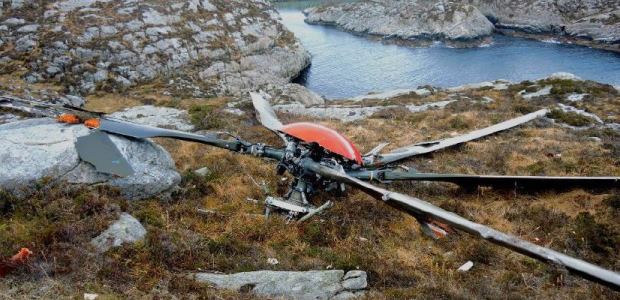
Norwegian Accident Board Still Probing 2016 Helicopter Crash
All 13 crew and passengers aboard the Airbus Super Puma died April 29, 2016, when the main rotor detached without warning. It crashed while en route from a North Sea platform. Both Norwegian and UK authorities have grounded this type of helicopter since the crash.
A newly released preliminary report from Accident Investigation Board Norway (AIBN) explains investigators' findings to date in the crash of an Airbus Helicopters EC 225 LP Super Puma helicopter on April 29, 2016, while it was en route from a North Sea platform. Both Norwegian and UK authorities have grounded this type of helicopter since the crash, which killed all 13 on board -- two crew members and 11 passengers. The helicopter's main rotor detached without warning, and AIBN has been conducting metallurgical examinations and, working with Airbus Helicopters, trying to determine what caused the fatigue fracture in one of the eight second stage planet gears in the epicyclic module of the main rotor gearbox, which was the cause of the crash.
The agency's report says the observed failure mode in the accident "seems to differ from what was expected or foreseen during the design and certification of the main rotor gearbox," adding, "No material conformity issues or discrepancies in the manufacturing process have been revealed during the investigation."
The main rotor gearbox was involved in a road accident during transport in 2015 and was inspected, repaired, and released for flight by Airbus Helicopters afterward, then was installed in January 2016 on the helicopter. The gearbox underwent 260 flight hours prior to the crash. The report says AIBN has found no physical evidence that could connect the ground transport accident to the subsequent fatigue cracks in the second stage planet gear.
Another noteworthy element to the crash is that there are "clear similarities" to a crash of a different Airbus Helicopters aircraft in 2009 off the coast of Scotland, the board reported. The helicopter involved in the 2009 crash had a nearly identical main rotor gearbox to the one installed in the Super Puma helicopter, and in both cases one of the eight second stage planet gears in the epicyclic module fractured because of fatigue.
"The AIBN will continue the investigation into how and why two similar catastrophic accidents could happen to near identical helicopters only seven years apart. Further assessment of the follow-up on the [2009 helicopter] safety recommendations and the continuing airworthiness of the gearbox after 2009 is a relevant issue," the report states. "Due to the scope and complexity of the investigation it is not feasible to estimate a completion date for the final report. The investigation will continue at a high activity level."
Immediately after the 2016 accident, both Norway's and the UK's civil aviation authorities grounded Airbus Helicopters EC 225 LP helicopters, except for those used in search and rescue flights for the purpose of saving lives. On May 11, 2016, those authorities extended the scope of their bans to Airbus Helicopters type AS 332 L2 helicopters -- the type involved in the 2009 crash -- except for search and rescue.